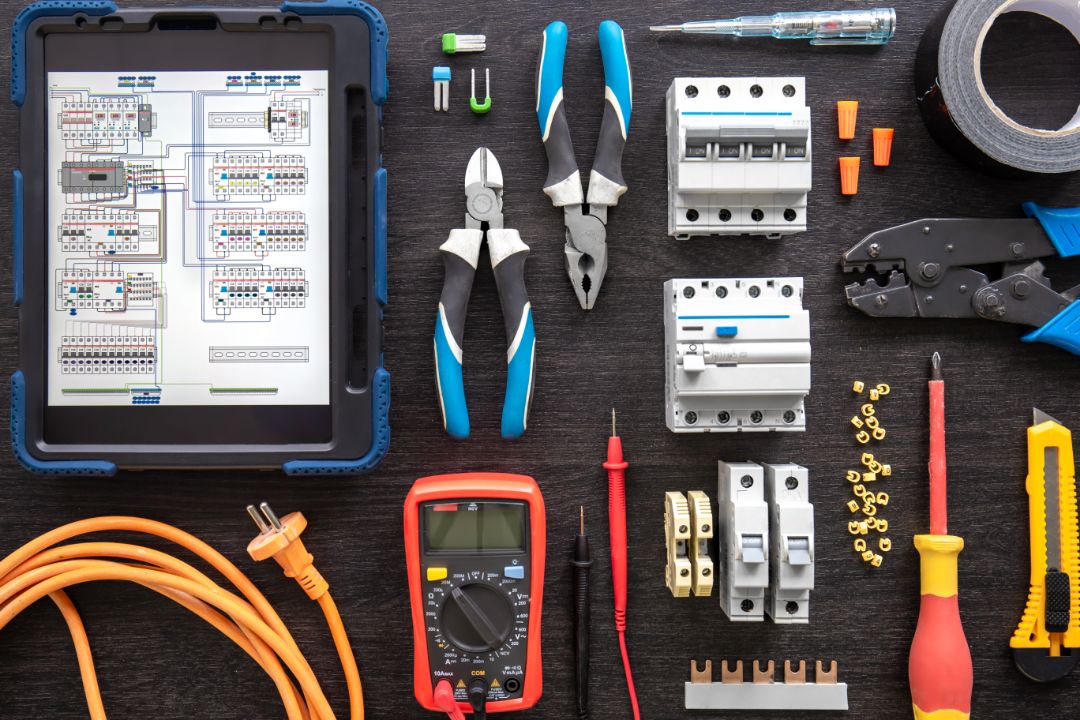About This Course
Course Curriculum
-
Module 1- Introduction to Electric Machines
00:03:00 -
Module 2- Types of Electric Machines and Principle of Electrical Generation
00:09:00
-
Module 1- Importance and Construction of DC Machines
00:26:00 -
Module 2- Armature Winding and EMF Equation
00:40:00 -
Module 3-Solved Example 1
00:05:00 -
Module 4-Solved Example 2
00:04:00 -
Module 5-Solved Example 3
00:07:00 -
Module 6-Solved Example 4
00:06:00 -
Module 7-Separately Excited DC Machine
00:21:00 -
Module 8-Shunt and Series DC Machines
00:25:00 -
Module 9-Solved Example 1 on Separately Excited DC Machine
00:07:00 -
Module 10-Solved Example 2 on Separately Excited DC Machine
00:07:00 -
Module 11-Solved Example 3 on Shunt Generator
00:04:00 -
Module 12-Solved Example 4 on Shunt Generator
00:07:00 -
Module 13-Solved Example 5 on Series DC Generator
00:06:00 -
Module 14-Types and Applications of Compound DC Motors
00:07:00 -
Module 15- Torque-Speed Characteristics and Speed Control of Separately Excited DC Motor
00:33:00 -
Module 16- Torque-Speed Characteristics of Series DC Motor
00:08:00 -
Module 17-Solved Example 1 on Speed Control
00:08:00 -
Module 18-Solved Example 2 on Speed Control
00:06:00 -
Module 19- Starting of DC Machine
00:14:00 -
Module 20- Armature Reaction in DC Machines
00:10:00 -
Module 21-Losses in DC Machines
00:04:00
-
Module 1- What is a Transformer
00:02:00 -
Module 2- Importance of Transformer
00:04:00 -
Module 3-Iron Core of Transformer
00:04:00 -
Module 4- Magnetic Circuit Inside Transformer
00:05:00 -
Module 5- Windings of Transformer
00:03:00 -
Module 6- Why are Windings Made of Copper
00:01:00 -
Module 7- Classification of Windings
00:05:00 -
Module 8- Insulating Material and Transformer Oil
00:02:00 -
Module 9- Conservator of Transformer
00:03:00 -
Module 10- Breather of Transformer
00:04:00 -
Module 11- Bushings of Transformer
00:04:00 -
Module 12- Tap Changer of Transformer
00:03:00 -
Module 13- Cooling Tubes of Transformer
00:01:00 -
Module 14- Buchholz Relay of Transformer
00:02:00 -
Module 15- Explosion Vent
00:02:00 -
Module 16- Methods of Cooling
00:03:00 -
Module 17-Types of Transformers
00:03:00 -
Module 18- Power Transformer and Distribution Transformer
00:05:00 -
Module 19- Single Phase Core Type Transformer
00:04:00 -
Module 20-Single Phase Shell Type Transformer
00:05:00 -
Module 21- 3 Phase Core Type
00:02:00 -
Module 22- 3 Phase Shell Type
00:01:00 -
Module 23- Comparison between Shell and Core CSA
00:01:00 -
Module 24- Comparison between Shell and Core Type
00:01:00 -
Module 25- Notes
00:03:00 -
Module 26-Video Explaining The Components in 3D and Real Life
00:05:00
-
Module 1- Introduction to Magnetic Circuits
00:02:00 -
Module 2- Induced Emf and Current
00:04:00 -
Module 3- Ampere Right Hand Rule
00:04:00 -
Module 4- Magnetic Circuit and Important Definitions
00:06:00 -
Module 5- Linear and Non Linear Materials
00:03:00 -
Module 6-Flux Linkage and Reluctance
00:04:00 -
Module 7- Analogy between Electric and Magnetic Circuits
00:06:00 -
Module 8- Fringing Effect
00:02:00 -
Module 9- Example 1 Magnetic Circuits
00:07:00 -
Module 10- Example 2
00:03:00 -
Module 11- Example 3
00:06:00 -
Module 12- Application on Magnetic Circuit – Transformers
00:04:00
-
Module 1- Introduction to Transformers
00:02:00 -
Module 2- Construction of Transformer
00:02:00 -
Module 3-Theory of Operation
00:04:00 -
Module 4- Ideal Transformer
00:05:00 -
Module 5-Non Ideal Transformer
00:02:00 -
Module 6- Effect of Loading on Transformer
00:03:00 -
Module 7- Transformer Regulation
00:03:00 -
Module 8- Transformer Losses
00:03:00 -
Module 9- Transformer Efficiency
00:05:00 -
Module 10- Transformer Rating
00:02:00 -
Module 11- Question 1
00:01:00 -
Module 12- Question 2
00:02:00 -
Module 13- Question 3
00:01:00 -
Module 14- Example 1
00:01:00 -
Module 15- Voltage Relation of Transformer
00:04:00 -
Module 16- Transformer Exact Equivalent Circuit
00:06:00 -
Module 17- Concept of Refereeing
00:04:00 -
Module 18- Approximate Equivalent Circuit
00:02:00
-
Module 1- Construction and Principle of Operation of Synchronous Generator
00:29:00 -
Module 2- Principle of Operation of Synchronous Motor
00:24:00 -
Module 3- Equivalent Circuit and Phasor Diagram of Non Salient Synchronous Machine
00:29:00 -
Module 4-Solved Example 1 on Non Salient Machine
00:05:00 -
Module 5-Solved Example 2 on Non Salient Machine
00:11:00 -
Module 6-Solved Example 3 on Non Salient Machine
00:07:00 -
Module 7- Solved Example 4 on Non Salient Machine
00:04:00 -
Module 8-Solved Example 5 on Non Salient Machine
00:07:00 -
Module 9-Solved Example 6 on Non Salient Machine
00:03:00 -
Module 10- Equivalent Circuit and Phasor Diagram of Salient Synchronous Machine
00:39:00 -
Module 11-Solved Example 1 on Salient Machine
00:09:00 -
Module 12- Solved Example 2 on Salient Machine
00:05:00 -
Module 13-Solved Example 3 on Salient Machine
00:10:00 -
Module 14- Parallel Operation of Two Generators
00:17:00 -
Module 15- Synchronization of Machine with Grid
00:10:00
-
Module 1- Construction and Theory of Operation of Induction Machines
00:27:00 -
Module 2- Equivalent Circuit and Power Flow in Induction Motor
00:23:00 -
Module 3- Torque-Speed Characteristics of Induction Motor
00:20:00 -
Module 4- Solved Example 1 on Induction Motor
00:08:00 -
Module 5-Solved Example 2 on Induction Motor
00:06:00 -
Module 6-Solved Example 3 on Induction Motor
00:06:00 -
Module 7-Solved Example 4 on Induction Motor
00:18:00 -
Module 8-Solved Example 5 on Induction Motor
00:13:00 -
Module 9- Methods of Speed Control of Induction Motor
00:27:00 -
Module 10- Methods of Starting of Induction Motor
00:21:00 -
Module 11-Solved Example on Motor Starter
00:15:00 -
Module 12- Principle of Operation of Doubly Fed Induction Generator
00:11:00 -
Module 13-Self Excited Induction Generator
00:08:00
-
Assignment -Electrical Machines for Electrical Engineering

 Development
Development QLS
QLS Business
Business Healthcare
Healthcare Health & Fitness
Health & Fitness Technology
Technology Teaching
Teaching Lifestyle
Lifestyle Design
Design













